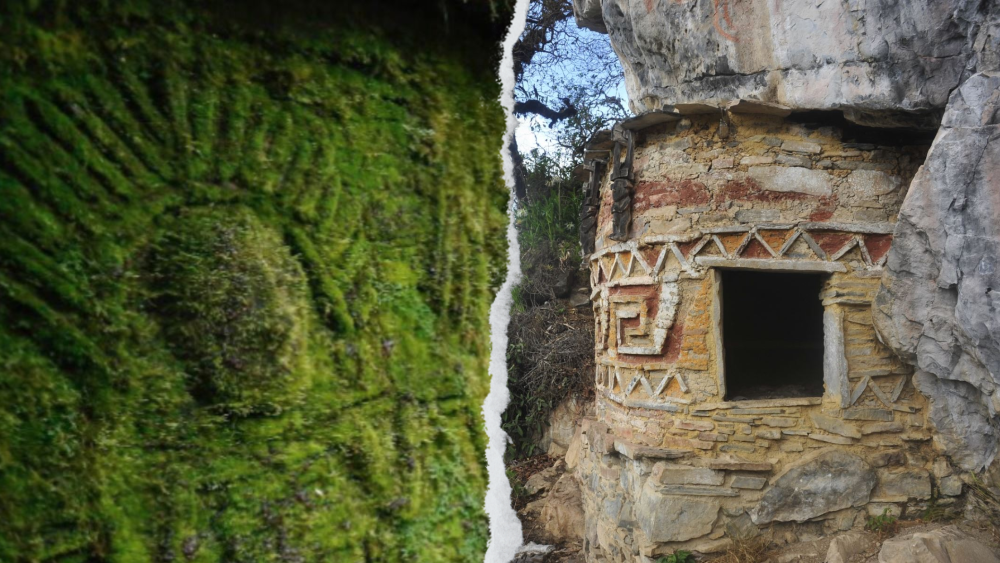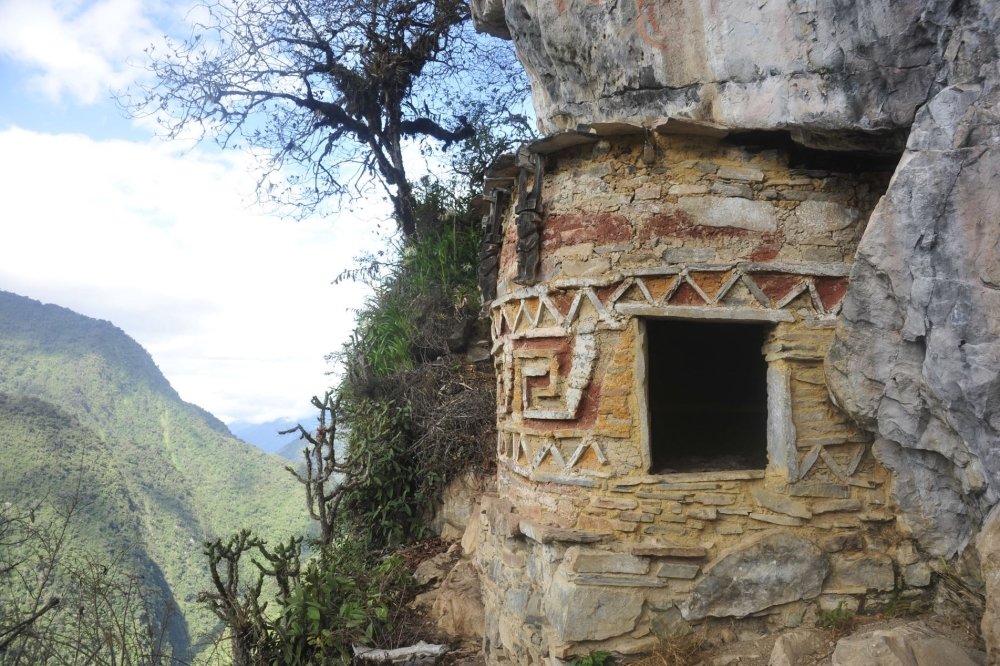Citadel The Great Pajaten | San Martin

Location
Citadel The Great Pajaten | San Martin is located in the department of La Libertad, in northeastern Peru. More specifically, it is located in the province of Mariscal Caceres, in the mountainous region of the high jungle. This area is known for its mountainous terrain and dense vegetation, which makes access to the Citadel difficult and requires some effort, either on foot or by means of transportation suitable for mountainous terrain.
How to get there?
Getting to El Gran Pajaten Citadel can be an adventure due to its remote location in the high jungle of northeastern Peru. Here is a general description of how to get there:
- Access from Lima or Trujillo:
From Lima: You should first get to Trujillo, which is the closest city with good transport connections. You can get to - Trujillo by plane from Lima.
From Trujillo: From Trujillo, you can take a bus to Juanjuí or Tocache, which are the closest cities from where you usually leave to go to El Gran Pajatén. - From Trujillo to Juanjuí or Tocache:
Towards Juanjuí: There are buses that leave from Trujillo to Juanjuí. The trip can take around 12 to 14 hours, depending on road conditions.
To Tocache: You can also find buses going from Trujillo to Tocache. Travel time is similar to Juanjuí. - From Juanjuí or Tocache to El Gran Pajatén:
From Juanjuí or Tocache, you will generally need to arrange more specific local transportation, such as 4×4 vans or motorcycle cabs, depending on availability and road conditions.
The journey from Juanjuí or Tocache to the vicinity of El Gran Pajatén can involve several hours of travel over mountainous and sometimes not very well maintained roads. - Trekking to El Gran Pajaten:
Once in the vicinity, you may have to trek on foot. This may require local guides who know the area and the proper routes to reach the Citadel. - Additional considerations:
It is advisable to make arrangements in advance, especially if you need local transportation from Juanjuí or Tocache to El Gran Pajatén.
Due to the remote location and terrain conditions, it is advisable to be prepared with food, water and adequate hiking gear.
History
Gran Pajaten is one of the most impressive archaeological complexes of the Chachapoyas. It is strategically located in the high jungle, on top of a mountain, which provided both defense and visibility over the surrounding landscape. The site is composed of a series of terraces, plazas and stone structures, some of which have ceremonial and habitation functions.
El Gran Pajaten is believed to have been built between 200 and 800 A.D., although some of its structures may have been used and modified as late as the Inca period, before the arrival of the Spanish. The architectural complexity and strategic location of El Gran Pajaten suggest that it was an important political, religious and possibly military center for the Chachapoyas.
For a long time, El Gran Pajaten remained unknown to the outside world and was rediscovered by explorers and archaeologists in the 20th century. Due to its remote location and difficult access, the site has been relatively well preserved and continues to be the subject of archaeological study and research.
Today, El Gran Pajaten is a fascinating testimony to the ingenuity and culture of the ancient Chachapoyas, attracting tourists and scholars alike interested in the history and archaeology of Peru. Its discovery and study continue to shed light on the complex network of pre-Hispanic societies that inhabited the Andean region of northern Peru.
Discovery
The discovery of El Gran Pajaten Citadel is part of an intriguing story involving explorers, expeditions and the rediscovery of ancient cultures lost in the high jungle of northeastern Peru.
The first known record of the site dates back to 1843, when a Franciscan missionary named Manuel María Ugarte arrived in the region. Ugarte sent reports of ancient structures high in the mountains, but his observations did not attract much attention at the time.
Interest in El Gran Pajaten was revived in the 20th century, especially in the 1960s, when more systematic exploration of the region by archaeologists and expeditionaries took place. One of the key events in the modern discovery of the Citadel was in 1965, when American explorer Gene Savoy led an expedition through the dense jungle and finally reached the ruins of El Gran Pajaten.
Gene Savoy, known for his explorations in the Amazon rainforest, was instrumental in documenting and recognizing El Gran Pajaten as an important archaeological site. His discoveries attracted international attention and awakened interest in the Chachapoyas culture and its archaeological legacy.
Since then, several expeditions and archaeological studies have been carried out at El Gran Pajaten to better understand its history, architecture and cultural significance. The site continues to be an active research area and a destination for tourists interested in exploring the archaeological and natural wonders of the Peruvian high jungle.

Features
- Architecture: The site is composed of a series of stone structures, including terraces, plazas, and circular and rectangular buildings. These structures are built with advanced stone masonry techniques, distinctive characteristics of the Chachapoyas culture.
- Functionality: It is believed that El Gran Pajaten had multiple functions, including ceremonial, political and possibly military aspects. The structures suggest areas for religious rituals and elite residences.
- Terrace System: Around the main structures, there are agricultural terraces that would have allowed the inhabitants of El Gran Pajaten to grow food in the difficult conditions of the high jungle.
- Preservation: Due to its remote location and relatively recent discovery in the modern era, El Gran Pajaten has been relatively well preserved compared to other more accessible and well-known archaeological sites in Peru.
- Cultural Significance: As part of the legacy of the Chachapoyas culture, El Gran Pajatén is a testament to the architectural skill and social complexity of this ancient civilization. Its rediscovery has contributed significantly to the understanding of the pre-Hispanic history of northern Peru.
- Access and Conservation: Despite its historical and archaeological importance, access to El Gran Pajatén can be difficult due to its remote location and terrain conditions. This has also contributed to its conservation by limiting human impact and urbanization at the site.
Recommendations
- Planning and Preparation: Due to its remote location and terrain conditions, it is important to plan ahead for your trip. Consider the time needed to get there from nearby towns such as Juanjuí or Tocache, and make sure you have enough time to explore the site once you get there.
- Transportation: Arrange your transportation in advance. From Juanjuí or Tocache, you will need additional transportation such as 4×4 vans or motorcycle cabs to get to the vicinity of El Gran Pajatén. Be sure to check the availability of these services and departure times.
- Local Guides: It is highly recommended to hire a local guide who knows the area and can provide you with detailed information about El Gran Pajaten. Guides will not only help you navigate the terrain, but will also provide invaluable cultural and historical insight into the site.
- Equipment: Be adequately prepared with hiking gear, such as sturdy boots, comfortable walking clothes, sun protection, insect repellent and drinking water. Weather in the high jungle can be variable, so also bring rain gear and extra layers as needed.
- Respect for the Site: As a visitor, respect the archaeological site and the indications of the local guides. Do not alter the structures or collect artifacts or archaeological remains.El Gran Pajaten is a protected site and it is important to preserve it for future generations.Physical
- Conditions: Be aware that access to El Gran Pajaten may require long and sometimes demanding hikes due to the mountainous terrain and high jungle.Make sure you are in good physical condition and consider your own limitations before embarking on the adventure.
- Respect for the Environment: In addition to respecting the archaeological site, respect the surrounding natural environment. Avoid leaving trash and follow sustainable tourism practices during your visit.











